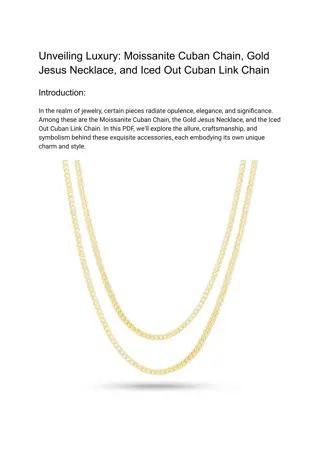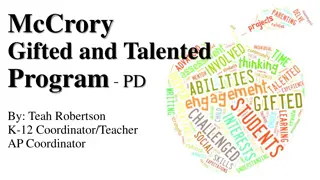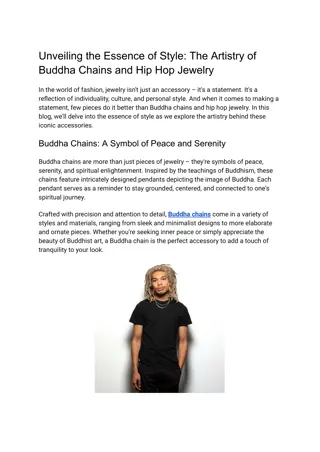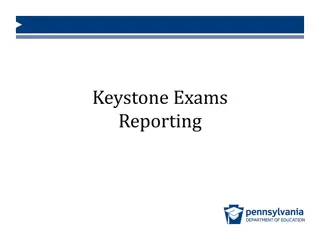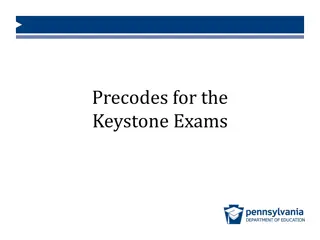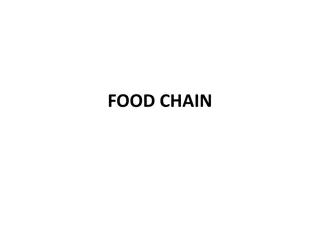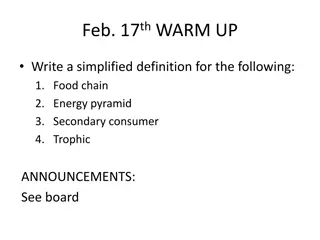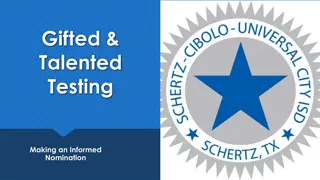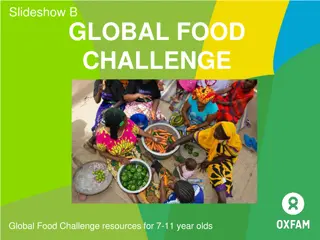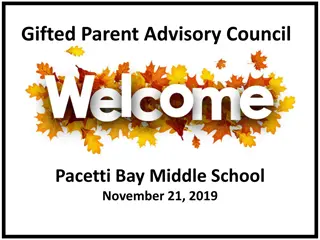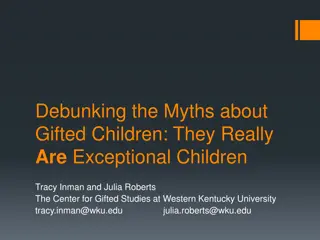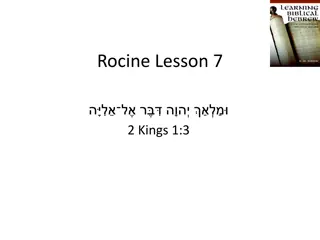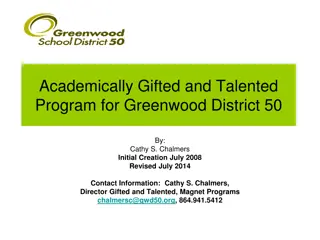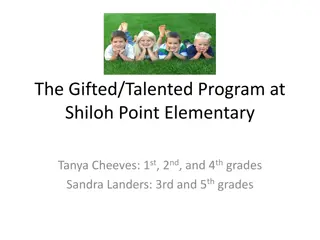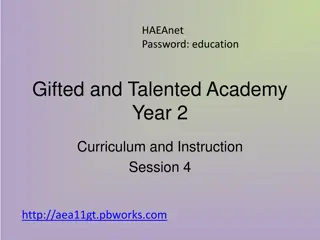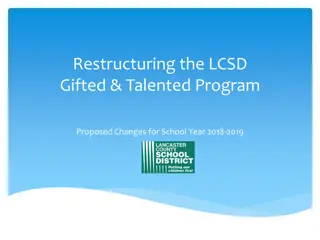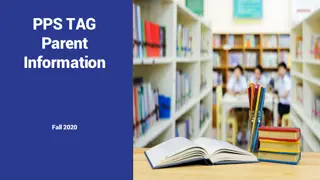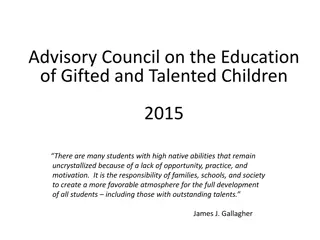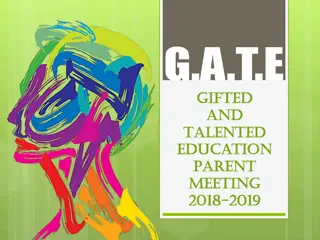Exploring Food Chains and Keystone Species in Gifted Education
Delve into the intricate relationships of food chains and keystone species with scientifically gifted and more able students as they develop a deeper understanding of ecosystems. Enhance knowledge, skills, and attitudes through engaging activities and discussions. Encourage critical thinking and analysis of complex ecological systems.
Download Presentation

Please find below an Image/Link to download the presentation.
The content on the website is provided AS IS for your information and personal use only. It may not be sold, licensed, or shared on other websites without obtaining consent from the author. Download presentation by click this link. If you encounter any issues during the download, it is possible that the publisher has removed the file from their server.
E N D
Presentation Transcript
Gifted Education Section, CDI, EDB Learning and Teaching Resources for Scientifically Gifted/ More Able Students Food Chains & Keystone species (S1 Science Unit 3: Looking at Living Things S2 Science Unit 7: Living things and air) September 2021
Prior knowledge Students should have developed a basic understanding of the following: a food chain as a representation to show the feeding relationship between organisms; the interdependence between environment living things and
Learning objectives Knowledge: to understand the meaning of keystone species to understand the inter-relationship between organisms in a community Skill: to analyse and interpret secondary data Attitude: to respect and care for living things and show concern for endangered species and keystone species
Consider the food chain below: lettuce lizard eagle grasshopper
Activity: Traffic Light To see if students feel they can apply a concept/idea. The teacher presents a statement/ question and the students respond by placing either a red, yellow, or green card. Teacher and students can immediately check the overall students responses and teacher can invite students to share their views. Agree Disagree Not sure
Statements Lettuce is at the start of the food chain. Lettuce is the producer. Lettuce is the consumer. Grasshopper is the producer. Grasshopper is the consumer. Lizard eats eagle. Eagle eats lizard. Eagle eats grasshopper and lizard. Grasshopper cannot eat lettuce because grasshopper is smaller than lettuce. 10. There is one eagle in the food chain. 1. 2. 3. 4. 5. 6. 7. 8. 9.
Statement 8 lettuce lizard eagle grasshopper Eagle eats grasshopper and lizard. Agree Disagree Not sure
Statement 10 lettuce lizard eagle grasshopper There is one eagle in the food chain. Agree Disagree Not sure
Brainstorming If a top predator goes extinct, could this cause a particular plant go extinct as well? If so, how?
Popular idea about ecology before 1960s The number of producers limits the number of herbivores. In turn the number of herbivores limits the number of predators that feed on them. Every level was regulated by the amount of food. Predator Herbivore (plant- eating animals) Bottom-up view Producer
Green World Hypothesis proposed in 1960s The number of herbivores is controlled not only from the bottom up, but also from the top down. Predators are the key to keeping our world green because they keep the numbers of plant-eating herbivores from growing out of control and consume all plants. Predator Herbivore (plant- eating animals) Bottom-up view Top-down view Producer Hairston, N. G., Smith, F. E., & Slobodkin, L. B. (1960). Community structure, population control, and competition. The american naturalist, 94(879), 421-425.
Ecological experiments by Prof. Robert Paine (1960s) Prof. Paine conducted a series of experiments to study the role of predators. He identified organisms present in a rocky shore and then he mapped out the feeding relationship between the organisms and constructed a food web. Starfish Sea Snail Sea Urchin Barnacle Chiton Mussel Limpet Algae The food web shown here is simplified.
Experiment 1 Prof. Paine removed the starfish from the food web over a two year study and he obtained the result below. What do you see about the result? What do you wonder about the role of the starfish in the food web? What other experiment would you suggest for Prof. Paine to verify his hypothesis? 1. Number of species a) 15 b) 8 c) Before removal After removal
Experiment 2 Prof. Robert Paine repeated his earlier experiments by removing the starfish in another region. The number of species decreases from 20 to 14. What does the result show? 2. Moreover, instead of removing the starfish, he removed other species. The result indicated that the number of species remain unchanged. What does the result show? 3.
Summary Based on findings, he coined the term keystonespecies to illustrate that some species can have a disproportionately large effect on its natural environment. The theory of keystone species is influential to different areas in ecological sustainability (e.g. population management)
Extended research about keystone species In 19th century, sea otters were hunted for fur trade. It is now an endangered species. Sea otters is also a keystone species in marine region. Let s do some online research about sea otter on how they work as a keystone species. The photo is extracted from : https://www.seaotters.com/2013/05/why-are-sea-otters-important-no-sea-otters-no-kelp-forests/
Reference Allen, M. (2014). Misconceptions in Primary Science, 2nd edn, UK: Open University Press. Hairston, N. G., Smith, F. E., & Slobodkin, L. B. (1960). Community structure, population control, and competition. The American Naturalist, 94(879), 421-425. Paine, R. T. (1966). Food web complexity and species diversity. The American Naturalist, 100(910), 65-75.


